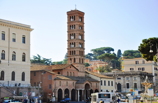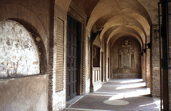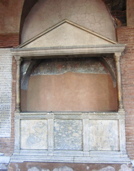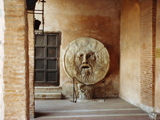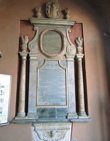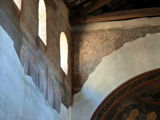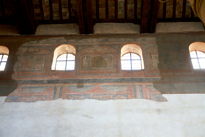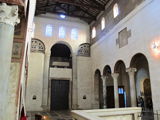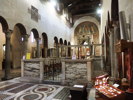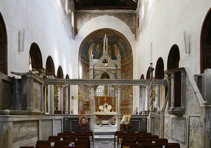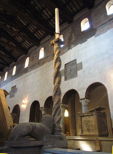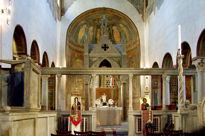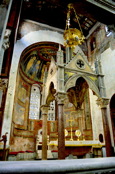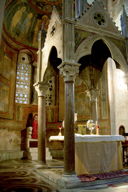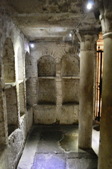Santa Maria in Cosmedin is a church dedicated to the Blessed Virgin Mary, located in the Forum Boarium.
For reference, a plan of the church is available
here.
History
The church was probably first built in the 6th century as part of a diaconia by Pope Stephen II. A deaconry was a place where charity distributions were given to the poor. It was built over the remains of the Templum Herculis Pompeiani in the Forum Boarium and of the Statio annonae, one of the food distribution centres of ancient Rome. Remains of the pavement survive in the crypt and behind the church.
Since it was located near many Byzantine structures, in the 7th century this church was called de Schola Graeca, (Our Lady for the Greek Community) and a close street is still called della Greca. It was used by Greek merchants in Rome, and Greek monks used to serve here.
Greek monks escaping iconoclastic persecutions decorated the church around 782, when pope Adrian I promoted its reconstruction in 782m and added the crypt. Because of its beauty, the church received the adjective Cosmedin (from Greek kosmidion), beautiful. The name Kosmidion was used in the 8th century, probably a reference to the rich decoration. The church was rebuilt again in the 9th century by Pope Nicholas I.
The church was partially destroyed during the sack of Rome in May 1084 by Robert Guiscard's Norman troop. A substantial restoration was accomplished in 1124 under Bishop Alfanus, camerarius of Pope Callixtus II, who added the portico, red-brick Romanesque bell tower and the beautiful Cosmatesque style decorations inside.
After a period of decay, in 1718 the church was brought up to a Baroque style, mainly expressed by a new façade, by Giuseppe Sardi in 1718. The Baroque additions, however, were removed in the restoration of 1894-1899 by the architect Giovanni Battista Giovenale.

